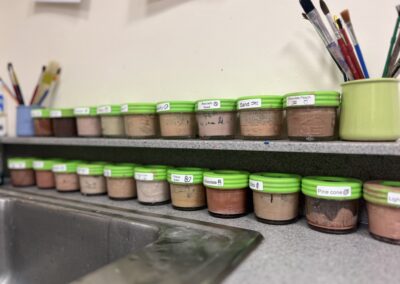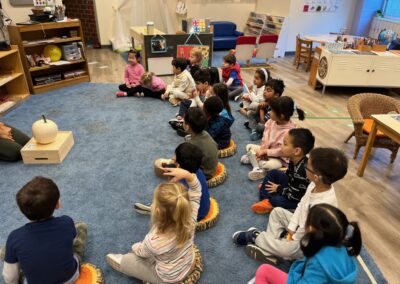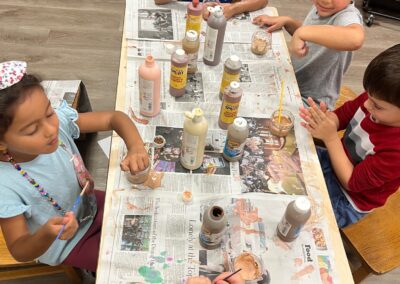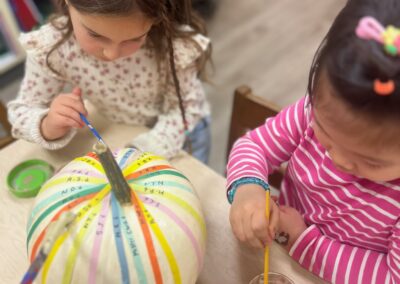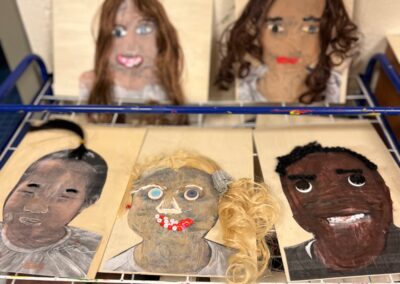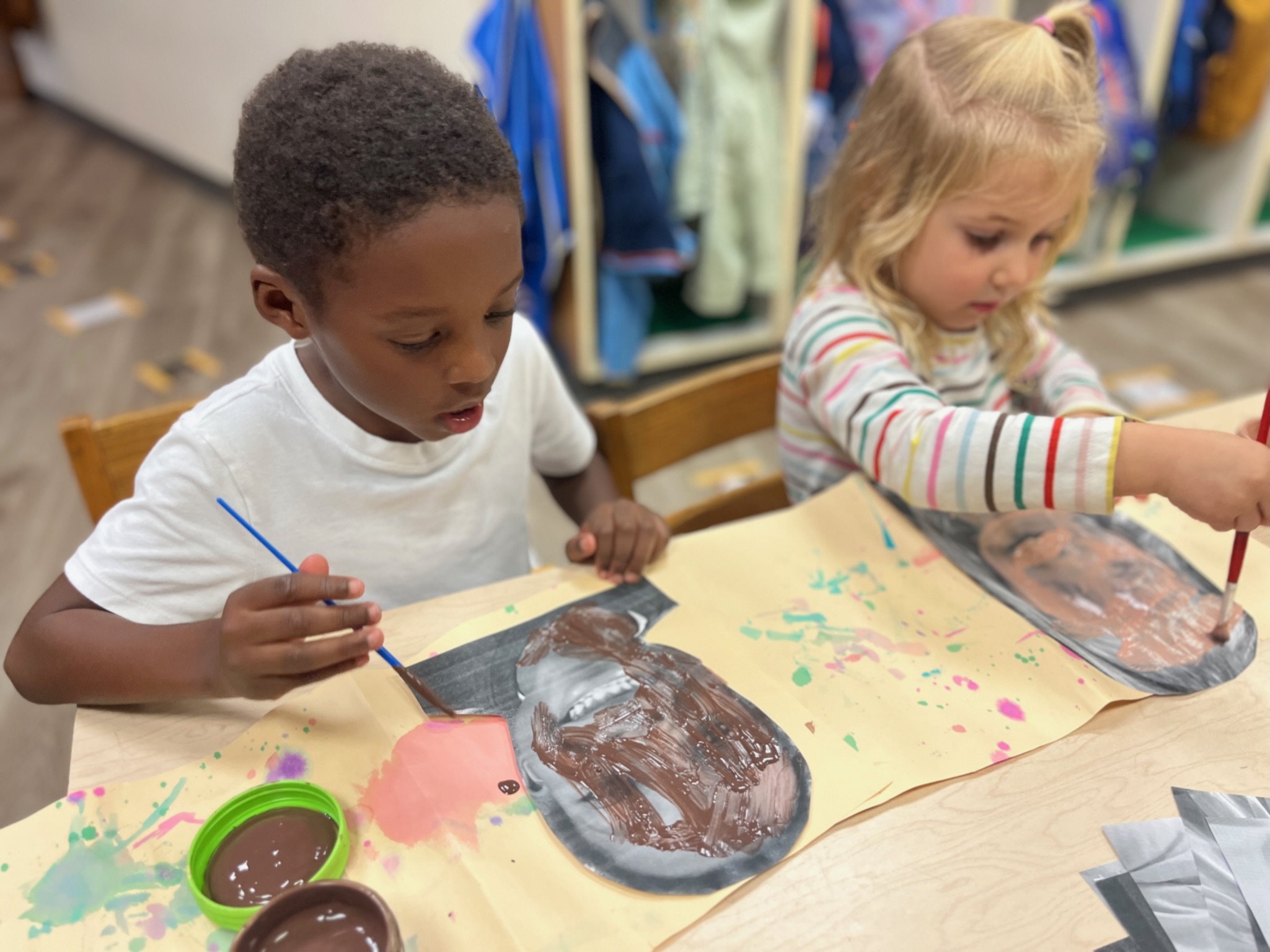
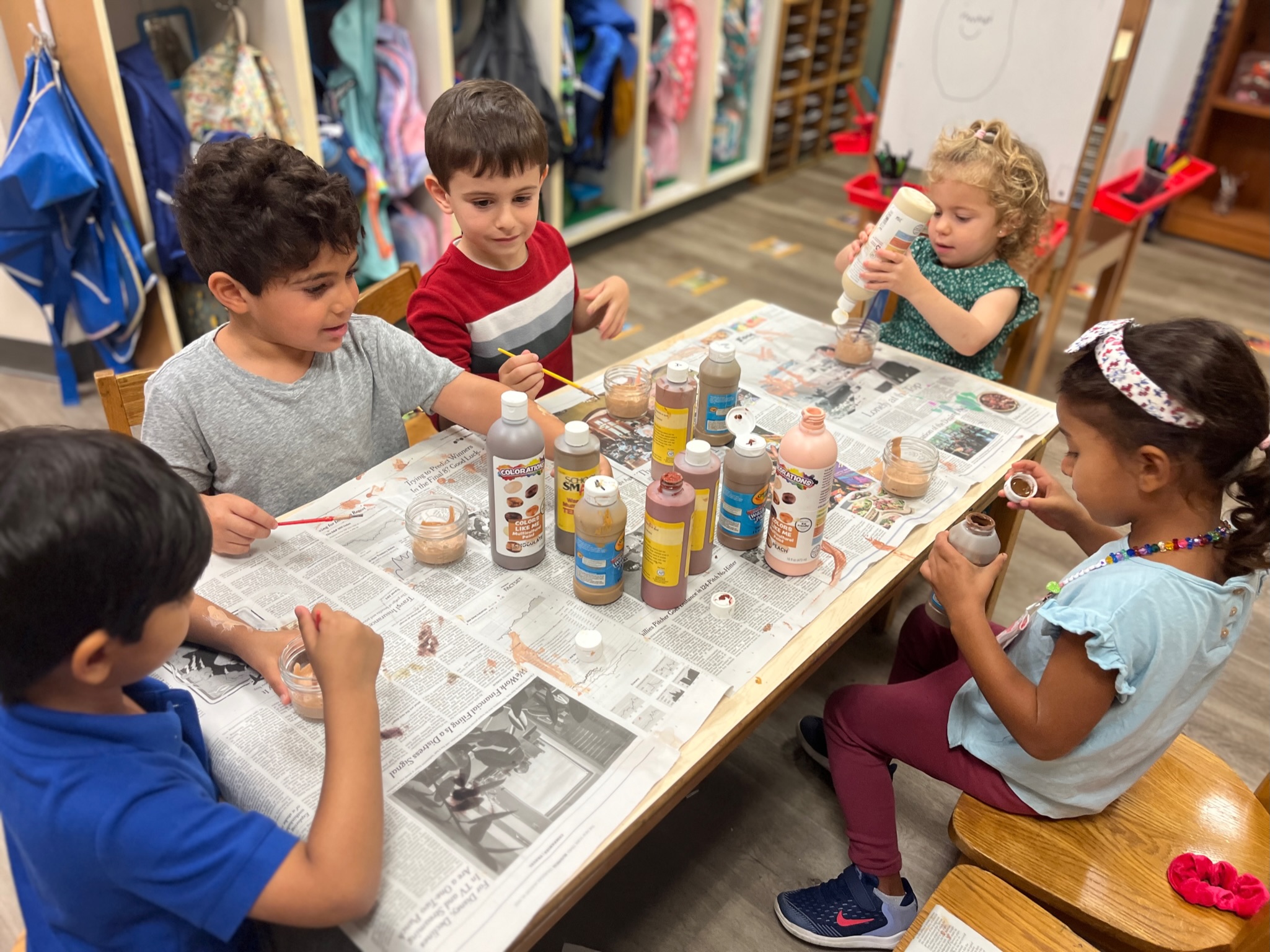
We began exploring skin tone through literature and activities at the drawing table. With a focus on community, and social and emotional learning, we shared books during story time to highlight various aspects of who we are and to spark connections.
Following the children’s curiosity about themselves and as members of our classroom community, they naturally noticed similarities and differences between themselves and others. Through rich discussions and team building activities our identity inquiry authentically emerged.
Diversity, Equity, Inclusion, & Belonging
Celebrating and offering meaningful learning experiences to explore and connect the many pieces of our identity will shape our belonging work this year. We look forward to having families be a part of this journey and learning more about family traditions and cultural celebrations through family visits to the classroom throughout the year.
Writing & Drawing Table
At the writing and drawing table, we introduced skin tone pencils, crayons, and markers at the start of the year.
When the children draw faces or people, we encourage them to add skin color to their work, “because no one is the color of plain paper.” Following their interest, our artists created their own unique jars of skin tone paint.
Art Center
In the art center, we started by exploring a collection of multicultural paint colors. The children each chose a shade that looked like their closest match and painted a stripe on their arm. They quickly realized that although the colors were all similar to skin colors, none of the colors were quite their perfect match.
The children began blending various paint colors and adjusting their mixture. With each new drop of paint, they stirred and tested the new shade on their arm until they captured their unique skin tone. Adding a personal touch, each student thoughtfully created a unique name for their jar of customized paint.
Identity is a central theme interwoven through our Preschool 4 curriculum. Through the lens of self-portraits, we gain authentic insights into each child’s self-concept—what makes them feel uniquely themselves. This project is pivotal in our educational journey, deepening the children’s sense of self through artistic expression.
Provocation: How can you use the materials to create a self-portrait?
To begin, the children applied their customized skin-tone paints over black-and-white photographs of their faces. Next, they were encouraged to closely examine their reflections in mirrors, focusing on the individual features of their faces. This intentional step helped them transition from viewing the face as a whole to recognizing its unique components.
As they studied their reflections, they shared observations about the shapes, colors, and sizes of their facial features. With a variety of creative materials like buttons, beads, yarn, and fabric at hand, they chose items that best represented their unique characteristics.
The children also explored expressions. They adjusted the arrangement of their facial features to convey various emotions, such as happiness, sadness, or fear, adding another layer to their self-portraits. This aspect of the project allowed them to visually express their feelings and understand the connection between facial expressions and emotions.
The overarching goal of this multifaceted project is to nurture the children’s sense of individuality. It provides a platform for them to appreciate their own unique identities while fostering an understanding and respect for the diversity in others.
Exploring Fairness in Math
As we welcomed the autumn season, we introduced gourds and pumpkins to our discovery center. One pumpkin in particular captured the attention and imaginations of our scientists – a large white, bumpy pumpkin – that belonged to all of us as a preschool-4 class.
During a math lesson we explored division as a concept of being fair: “How can we divide the pumpkin so each of us can have a section to paint?” We counted off around the circle, including teachers, and found that we would need 24 spaces to make it fair for all of us. Using a strip of tape we divided the pumpkin in half, and the children noticed how one strip of tape made two sections. We wondered aloud together, “How many strips of tape would we need to make it fair?”
As we added another strip of tape, we counted the sections, and compared it to our magic number of 24. As we continued adding strips of tape, we counted off around our circle of friends and made predictions about how many more we might need to reach 24.
After eight strips of tape, many children began to notice a pattern: each time we added a piece of tape, we made two new spaces. We needed 12 strips to make 24 sections, one for each of us.
To support their understanding, we also created a growing pattern on the board as we divided the pumpkin with tape. Using triangle Magna-Tiles, we made a graph to capture how the sections increased with the number of tape strips. Representing the concept in two ways, many children were able to make connections to patterns, counting, and making realistic predictions and estimations.
Skin Tone Pumpkin Painting
Once our pumpkin was divided fairly into 24 sections, we each painted a section with our skin tone paint. Our preschool-4 pumpkin represented all the colors of us in our classroom community.

